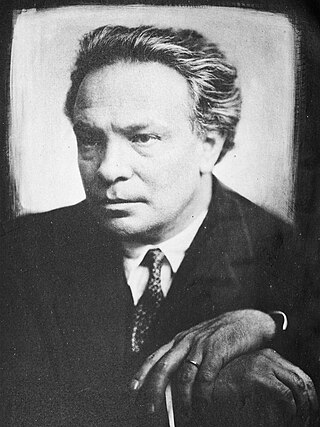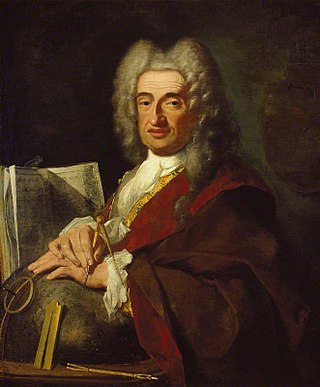
Ottorino Respighi was an Italian composer, violinist, teacher, and musicologist and one of the leading Italian composers of the early 20th century. His compositions range over operas, ballets, orchestral suites, choral songs, chamber music, and transcriptions of Italian compositions of the 16th–18th centuries, but his best known and most performed works are his three orchestral tone poems which brought him international fame: Fountains of Rome (1916), Pines of Rome (1924), and Roman Festivals (1928).
The city of Venice in Italy has played an important role in the development of the music of Italy. The Venetian state—i.e. the medieval and Early Modern Maritime Republic of Venice—was often popularly called the "Republic of Music", and an anonymous Frenchman of the 17th century is said to have remarked that "In every home, someone is playing a musical instrument or singing. There is music everywhere."

The San Giorgio Monastery is a Benedictine monastery in Venice, Italy, located on the island of San Giorgio Maggiore. It stands next to the Church of San Giorgio Maggiore, which serves the monastic community. Most of the old monastic buildings currently serve as headquarters of the Cini Foundation.

Luca Carlevarijs or Carlevaris was an Italian painter and engraver working mainly in Venice. He pioneered the genre of the cityscapes (vedute) of Venice, a genre that was later widely followed by artists such as Canaletto and Francesco Guardi.

Camillo Mariani was a major Italian sculptor whose work bridged the artistic worlds of Venice and Rome, forming a base for the Baroque style of the seventeenth century.

Riccardo Brengola was an Italian violinist and professor. He was associated with early Italian chamber music and with the performance of contemporary Italian classical music. For several decades, he was the Professor Emeritus of chamber music at the Accademia Musicale Chigiana in Siena, and from 1939 to 1966, he was the leader of the only piano quintet ensemble, the Quintetto Chigiano. His influence as a teacher also spread beyond Siena, through courses or classes at other major Italian Conservatories and to Ireland, Argentina, Spain and Japan. He maintained his career as a concert violin soloist and as an orchestral conductor, and was awarded the status of Commendatore of the Italian Republic in 1982.

Lyda Cini, Countess of Monselice was an Italian actress of cinema and theatre. Her career in theatre started when she was a child, acting on stage with Paola Pezzaglia in the French drama I due derelitti.

Ettore Tito was an Italian artist particularly known for his paintings of contemporary life and landscapes in Venice and the surrounding region. He trained at the Accademia di Belle Arti in Venice and from 1894 to 1927 was the Professor of Painting there. Tito exhibited widely and was awarded the Grand Prize in painting at the 1915 Panama–Pacific International Exposition in San Francisco. In 1926 he was made a member of the Royal Academy of Italy. Tito was born in Castellammare di Stabia in the province of Naples and died in Venice, the city which was his home for most of his life.

Gaetano Cozzi was an Italian historian, professor at Padua University, and researcher with the Giorgio Cini Foundation and Fondazione Benetton Studi e Ricerche. He was a specialist in Venetian history, with special attention to the institutions, the relationship between law and society and the cultural environment.

Fondazione Prada, co-chaired by Miuccia Prada and Patrizio Bertelli since 1995, is an institution dedicated to contemporary art and culture. From 1993 to 2010, the Fondazione has organised 24 solo shows at its exhibition spaces in Milan, conceived as dialogues with acclaimed contemporary artists. In 2015, the Fondazione Prada opened a new, permanent facility in Milan.
Ernesto Treccani was a visual artist, writer and political activist.

The Palazzo Loredan Cini is a Gothic-style palace located between the Palazzo Balbi Valier and the Rio San Vio on the Grand Canal, in the sestiere of Dorsoduro, Venice, Italy. The palace was formed from the amalgamation of the former Palazzo Foscari-Loredan with the adjacent Palazzo Grimani. The narrow facade on the Canal has no entrance, but the facade to the north on the Rio, has a single water door, and is connected to the adjacent campo by a bridge. The facade is decorated with two poliforas.
Save Venice Inc. is a U.S. non-profit organization dedicated to the conservation of art and architecture and the preservation of cultural heritage sites in Venice, Italy. Headquartered in New York City, it has an office in Venice, a chapter in Boston, and supporters across the United States and Europe.
Renato de Grandis was an Italian composer, musicologist, writer and Theosophist.

The Finding of Moses is an oil-on-canvas painting, now in the Walker Art Gallery in Liverpool, to which it was formally transferred in 1948 by the Liverpool Royal Institution, to which it had been given in 1843 by J. W. Gibsone. It had hung at the Walker on loan since 1893. Previously thought to be an autograph work by Paolo Veronese, it is now thought to be largely or wholly by his studio. A copy of the work is now at the Musee des Beaux Arts de Dijon
Giuseppe Fiocco was an Italian art historian, art critic, and academic. He is known for his research and writings on Venetian and Florentine artists.
Evelyn Sandberg-Vavalà, also known by her married name as Evelyn Kendrew, was a British art historian who studied iconography in the Italian Renaissance.

Vittorio Cini, Count of Monselice was an Italian industrialist and politician, Senator from 1934 to 1943 and minister of communications of the Kingdom of Italy from February to July 1943. He was among the richest people in Italy in his time.
Fondazione Eni Enrico Mattei (FEEM) is a nonprofit, nonpartisan research center and think tank based in Milan with offices in Venice and Viggiano. FEEM is considered a leading international research center for the study of energy and environmental issues, focusing globally on the environment, sustainable development and governance. The Foundation's mission is the research-based improvement of the quality of public and private sector decision-making.

Antonino Di Giorgio was an Italian general and politician, who fought in the First Italo-Ethiopian War, the Italo-Turkish War and the First World War, and served as Minister of War of the Kingdom of Italy from April 1924 to April 1925. He resigned after the rejection of his plan for a radical reform of the Royal Italian Army.













